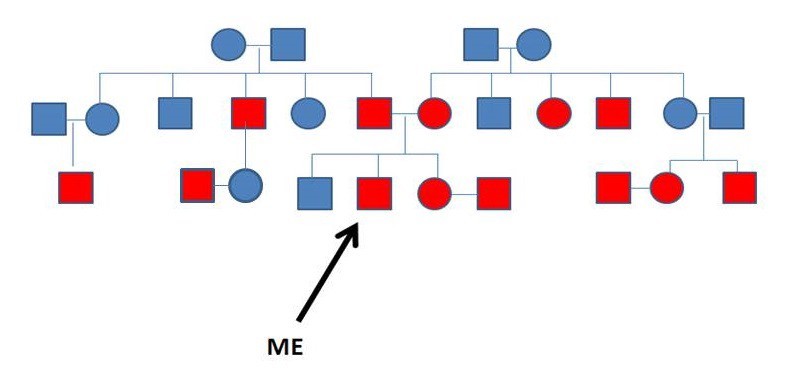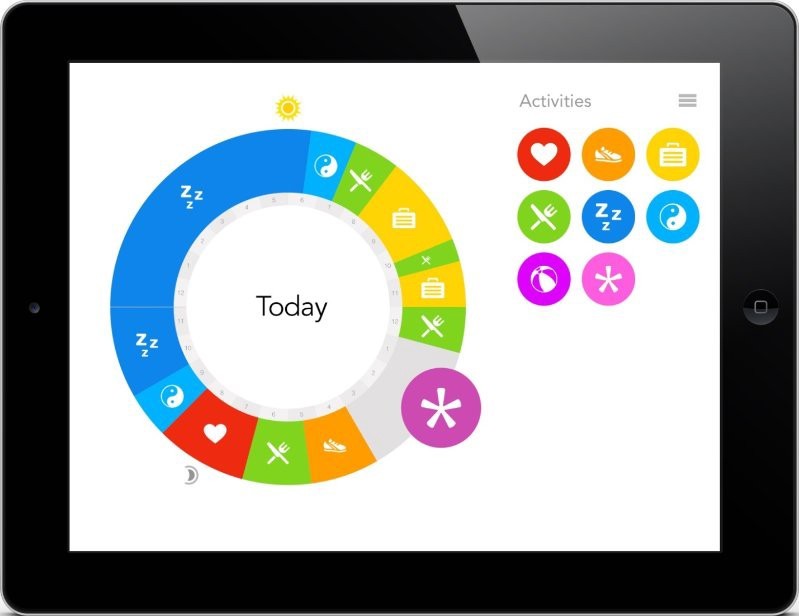I never expected to hit “rock-bottom” and I suppose I never knew what it meant. Being a straight-A student for as long as I could remember, and always being lucky enough to be surrounded by family and friends that loved me, I thought my story would be simple: sky’s the limit.
The embarrassment that went with my “fall” was slowly replaced by anger and perhaps the typical “why me”…
And yet, when I did the math, there was really only one person to blame. This guy right here:

Lesson #1:
The first clue that I had control over the anxiety and stress I would eventually succumb to came during medical school. Despite being prescribed top-of-the-line medications and getting the best form of diagnosis and evaluation, my moderate to severe gastro-esophageal reflux disease (GERD) was getting worse. During a bout of finals, while breaking up with my girlfriend at the time, also a type-A medical student, my GERD became so bad I couldn’t even swallow.
The connection between my stress levels and my esophageal symptoms became so crystal clear to me during this episode, that I never doubted the benefits I “thought” I felt from meditation and yoga ever again. I knew, for me, these controversial modes of stress reduction were potentially life-saving interventions.
Lesson #2:
Inspired by Dostoevsky’s work, and despite everything I had learned in my medical textbooks, I always admired those that could not sleep or eat for extended periods of time. I thought it was a sign of “toughness” or heightened spirituality. Anyone who has gone through rigorous medical training understands that these sorts of bouts are sometimes necessary, and have a heroic quality to them. Indeed, the medical profession has come under fire for encouraging this bravado in its hypercompetitive atmosphere as distinguishing the mice from the men.
After my medical intern year, while applying to MBA programs and international management consulting positions, I laid my sleep cycle to rest in the 24/7 bright lights of New York City. During two emotionally traumatic, and unfortunately simultaneous events, the combination of little to no sleep, transition stress and emotional instability got the best of me. Compounded by recreational drug abuse, I hit rock-bottom.
Survival:
While back in San Diego, receiving the warmth and comfort of my family and friends, I rediscovered the will to live. I began to see life as a long journey, to be lived well and gracefully. And most importantly, made a pact to myself that I wanted to be successful in my career, but I wasn’t willing to sacrifice my health to get there.
Upon starting my MBA program a few months later, I knew the old workaholic and largely unregulated patterns of my past may come back to haunt me. This was it, I wanted to start a company. After five years in the cages of medical training, I was finally being let out to accomplish my dreams of being a healthcare entrepreneur.
How could I emulate my entrepreneurial heroes like Elon Musk, Steve Jobs and Bill Gates, but not live the volatile 24/7 lifestyles they often do? How would I get 8 hours of sleep, exercise regularly, plan my meals, and still kick a** as an entrepreneur?
Thrival:
I decided to use what I learned in my medical education (not so much the physician culture) to come up with a new way to plan my day.

For the first time, I started seeing each new day as a blank canvas, waiting to be creatively filled. 24 hours each day, and I get to spend it any way I want — within my biological limits. The day ahead of me became more like a puzzle that needed to be solved, and I enjoyed using bright colors and simple icons to make the process fun.
How will I go to class from 8AM to 2PM, and drive to my internship program from 4PM to 6PM, but still get 8 hours sleep, one hour of exercise and 3 meals? Is there a way to also manage at least 30 minutes of meditation? Any chance to watch the sunset? And when’s the best time to call mom?
All these question marks transformed into small little bubbles that I could manipulate, reorder, and draw arrows to and from. All of a sudden, the ongoing mental math in my head that would usually crescendo towards the end of the day — as things got unpredictably skipped or added to the list — became manageable and surprisingly fun.

I grew increasingly inspired by the up-and-coming fields of lifestyle medicine, circadian biology and mindfulness. I loved the idea of focusing on optimizing human physiology rather than limiting our scope to management of disease.
I placed sunrise and sunset prominently into my visual planning while learning about “social jet-lag” and understanding that our evolutionary biology and even single-celled organisms thrive on regular day and night cycles.
I emphasized in my menu of activities the lifestyle vital signs that pioneers such as Dean Ornish at UCSF and Nobel Prize winner Elizabeth Blackburn were documenting as necessary for a long, healthy life: exercise, sleep, nutrition, stress management and spending time with loved ones.
I doubled-down on the use of simple color/icon combinations and the serial uni-tasking approach based on mindfulness research showing the grave importance of paying attention to the present moment.

Ironically, while I was developing Owaves for myself mostly with pen and paper during business school, I was looking everywhere else for an entrepreneurial project. I worked at the Navy’s technology transfer office at SPAWAR, spent a lot of time at UC San Diego’s research labs, and developed relationships with the Sanford-Burnham Research Institute, Scripps Institute of Oceanography and San Diego State University.
The light finally came on one day while staring at my “O” on the large whiteboard on my bedroom wall, and looking across the hallway at my brother’s room. “This could help him too!,” I thought to myself clearly for the first time. At that point, I resolved to get the experience I needed, save up as much money as possible, and run with Owaves.
Originally published at https://www.linkedin.com.
Originally published at medium.com


